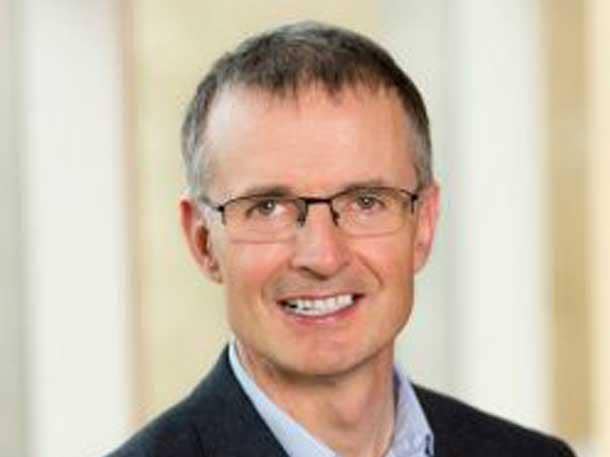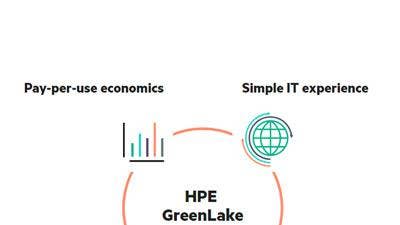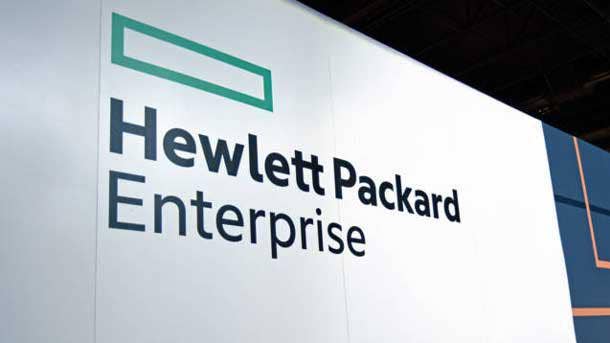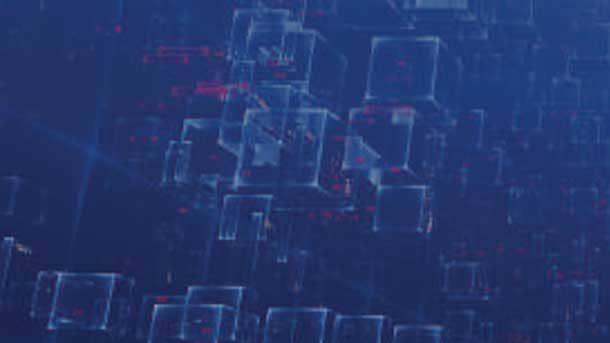HPE's Scott Ramsay On The Secret To GreenLake's 300 Percent Channel Sales Growth Rate
Scott Ramsay, global vice president of HPE GreenLake, says the 300 percent growth in HPE GreenLake channel sales in the most recent quarter is being driven by HPE's unmatched investment in the channel pay-per-use model.

The 'Only Game In Town'
Scott Ramsay, global vice president of the Hewlett Packard Enterprise GreenLake pay-per-use business, said HPE is the "only game in town for a true on-premise consumption model" being sold through its channel partners.
"There are a lot of leasing models from a variety of our competitors," said Ramsay. "I am absolutely convinced there is no one else in the market offering the channel this today. I suspect that will change, but for now we are the only game in town for a true on-premise consumption model sold through the channel."
One of HPE's channel differentiators is a robust 17 percent rebate up front on the GreenLake pay-per-use deals so that partners make the same amount on a GreenLake deal in year one as they would on a traditional Capex deal.
"In year one, partners make at least as much money as they would on a Capex sale," said Ramsay. "Every subsequent year they are making more than that. A typical GreenLake deal doubles. As a rule of thumb, partners are going to make double [the initial deal]. If the customer grows faster, they'll make more."
Key to HPE's success with GreenLake is the ability to leverage its enterprise application workload knowledge to actively manage capacity for customers, said Ramsay. "Understanding that and doing that effectively is how you eliminate over-provisioning," said Ramsay. "That is how customers save a huge amount of money."

What kind of sales momentum are you seeing for GreenLake Flex Capacity in the channel?
We just closed Q1 and we are looking at year-over-year growth in the range of 26 percent in new sales bookings when adjusted for currency.
We really knocked it out of the park in the channel business with nearly 300 percent growth in the channel. Most exciting from a channel perspective is we launched the new GreenLake Flex Capacity for partners really in Q4. We see a very, very healthy pipeline for our channel business. The channel grew across the board in terms of our geos [geographies].
In terms of the overall business, we continue to see good growth in Europe, a little bit of softness in North America, which we are working on. We are trying to get acceleration in North America to catch up with the rest of the world. That's been a challenge for us for a few quarters. There is good year-on-year growth there, but not as much as we'd like.
We are really investing in getting some growth, particularly in the India market. We are seeing some good momentum there.
From an offer perspective, we are seeing real growth in some of our end-to-end solutions. We are seeing a lot of growth in our backup offerings, our database offerings. SAP HANA has been a strong offering. That continues to be very healthy for us with pretty big deals. We've got a couple of deals closing there in Q2.
So the net-net of it is we have a good story across the board. We'd like to knuckle down and drive further acceleration in the North America market in particular.

What are the financial benefits for partners selling the GreenLake pay-per-use model?
Partners get very well compensated for selling GreenLake with our rebate program. The total return is really dependent on how quickly that business will grow.
In year one, partners make at least as much money as they would on a Capex sale. Every subsequent year they are making more than that. A typical GreenLake deal doubles. As a rule of thumb, partners are going to make double [the initial deal]. If the customer grows faster, they'll make more. Net-net partners can expect to be on a very positive trajectory versus a Capex sale.
What we know is that once a partner lands a GreenLake deal, they will be fulfilling against that contract for at least four years and in most cases significantly longer than that. It is frictionless upsell for them. Every time the partner adds another blade or 3Par, they are compensated.

What has proven to be the most popular GreenLake Flex Capacity offerings?
Anything from a storage perspective continues to be where we see the most traction. With storage, a lot of customers don't want to make that up-front capital investment. All of our storage solutions continue to see the most traction in the market.
Synergy is a real, real win for us as well. That composable compute model works incredibly well in a consumption model. We are seeing a lot of traction with Synergy.
We are also seeing a lot of traction with SAP HANA.

How much of an investment is HPE making to move the channel to pay-per-use?
We have been in the market depending on where you count the start point from six to eight years. The global launch was six years ago.
There are a number of things we are doing that keeps us very differentiated from the competition. We have a genuine metered set up where we look at what is being used, how the customer is using the capacity. We actively manage the capacity for the customer.
Metering is a tool. The outcome is making sure the customer is paying for the capacity they are consuming. This idea that if you meter you somehow have a consumption model is a misnomer. If you just meter, it becomes just another financial instrument.
What we do is use our metering to generate a bill, but more importantly to actively manage that capacity. Understanding that and doing that effectively is how you eliminate over-provisioning. That is how customers save a huge amount of money.
If you have things like metered leases—which some of our competitors have—or if you have pre-provisioned leases—which even more of our competitors have—what you are effectively doing is financing over-provisioned capacity. What we do is we eliminate that cost of over-provisioning.
What we have with customers is a statement of work where we meter the environment and add capacity ahead of demand. What you have is a genuine matching of capacity with the customer's needs. We do that better than anybody else in the industry. We have the best tools with Cloud Cruiser and we have seven years of experience in being able to manage that for the customer. That is what we do better than anyone else in the industry.

Talk about the experience HPE has managing a wide variety of complex workloads.
We have learned over eight years of experience with GreenLake that different workloads consume capacity in different ways. We can optimize the unit of measure in line with how that workload is being run and consumed. That could be on a virtual machine basis or a front-end terabyte backed up. It could be on a core utilization perspective.
What we do is we figure out what the workload is and align the unit of measure to that workload.
In the past, other people have used things like electricity consumed. We can do that as well and have a proxy to that using our iLO [Integrated Lights Out] technology. That is a rudimentary approach to how you would meter. It is valid and we use it in some instances with our customers, but if you are really trying to get an idea of what the workload is consuming and using you need to move up into a more workload-based unit of measure.
We have more experience than anybody else in the industry with workload-based units of measure. We are continuing to develop and add to that based on the workloads we are seeing customers consume through GreenLake.

What are the biggest misnomers with the pay-per-use channel models that are out there?
Leasing is not consumption. That is financing. Leasing, no matter how you construct it, is just financing. If you finance it in different ways, you pay more or less of a premium. It is as simple as that. We have lots of great financial models. We have a great leasing business. It is very appropriate for a number of cases, but it is not a true consumption model.
Going hand in hand with that is that somehow metering is the key to having a consumption model. Metering that enables you to manage capacity properly is absolutely key to a consumption model.
Metering is a tool that enables you to manage capacity. Making sure the customer has the right capacity is the key to having a proper consumption model.

What do you see with regard to channel investment from competitors in a model like this?
There are a lot of leasing models from a variety of our competitors. I am absolutely convinced there is no one else in the market offering the channel this today. I suspect that will change, but for now we are the only game in town for a true on-premise consumption model sold through the channel.
Think about the threat to the channel business from public cloud. If the channel doesn't have an alternative to the public cloud, that is a real problem.
From my perspective, it is vital that the channel has this available to them. I think the reason we are the only game in town at the moment for this true alternative is we have got this head start working with partners. To be honest, the first couple of runs we had with working this through the channel we didn't get right. I think the model we have got out there now is very, very compelling to the channel.
Do I think it is important that we are the only game in town? I'd love to be the only game in town forever. I think the channel and channel partners are waking up to the threat of the public cloud and are embracing this model. We have got a very economically compelling reason for them to embrace it as well as an operational reason for them to embrace it. That's why I think we are seeing our pipeline in the channel growing very, very rapidly at the moment.

What are the keys to consumption with regard to metering usage with software?
I don't think you can have a true consumption model without metering. Metering is absolutely vital. What the market needs to understand is that metering in itself does not give you consumption. It gives you information that allows you to genuinely deliver a consumption model. We have the best-in-class [metering]. There is no doubt about it. Cloud Cruiser—when we acquired them [in 2017]—was the best in the industry in terms of metering and providing information and insight in how capacity is being consumed. The value that you generate to your end customer is by taking that information and acting upon it in a way that allows the customer to get the capacity they need when they need it. So you continually right-size their environment. That eliminates the cost of over-provisioning. Simply using metering as information and not acting upon it is where others fall short.
What we do is take that metering, take those insights, share it with the customer, and help them continually plan and update their [IT] estate in line with their business needs. That is where the magic happens.